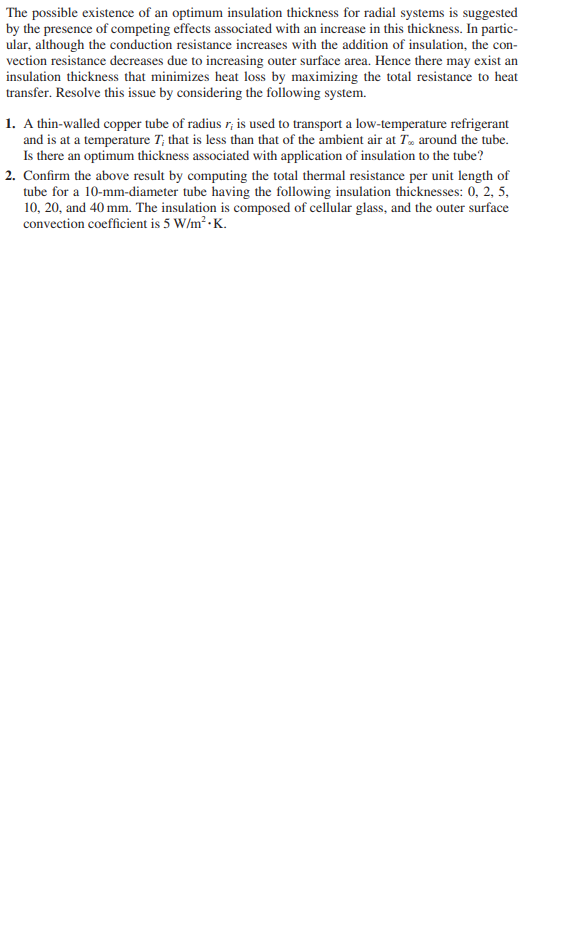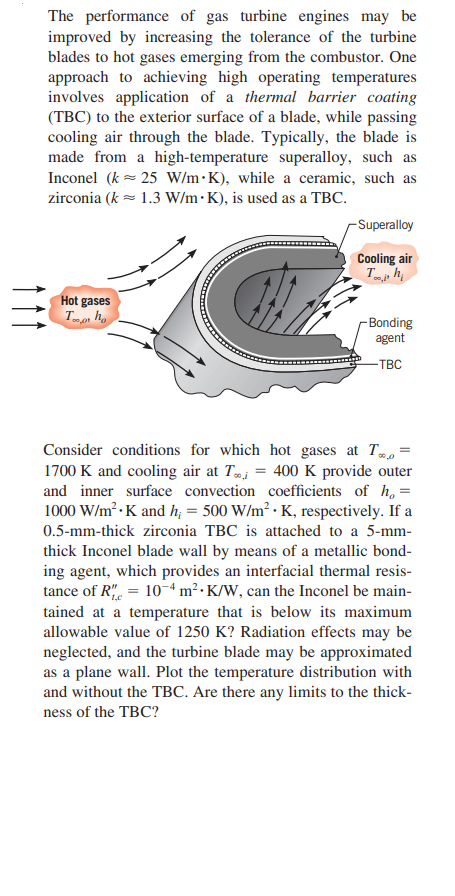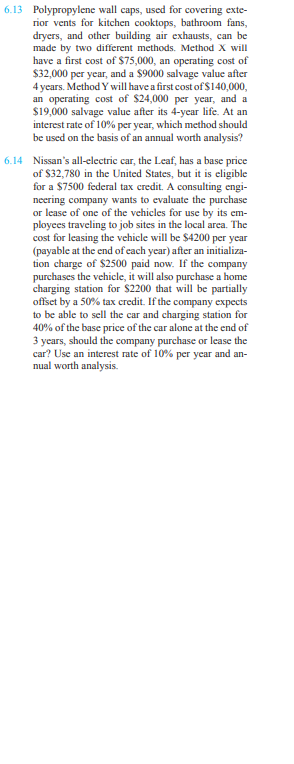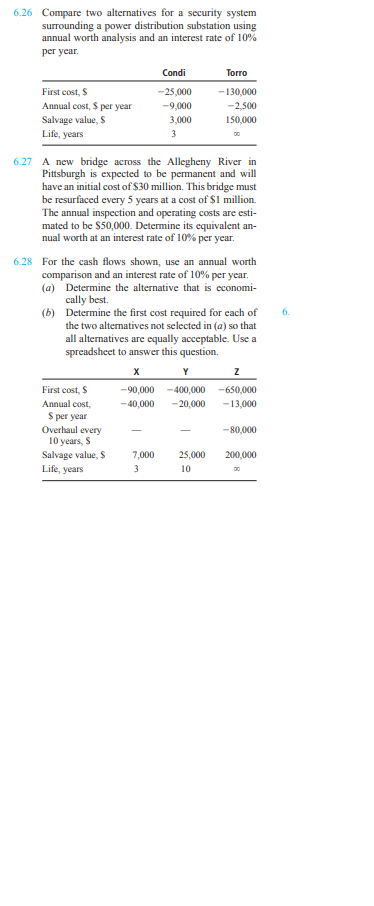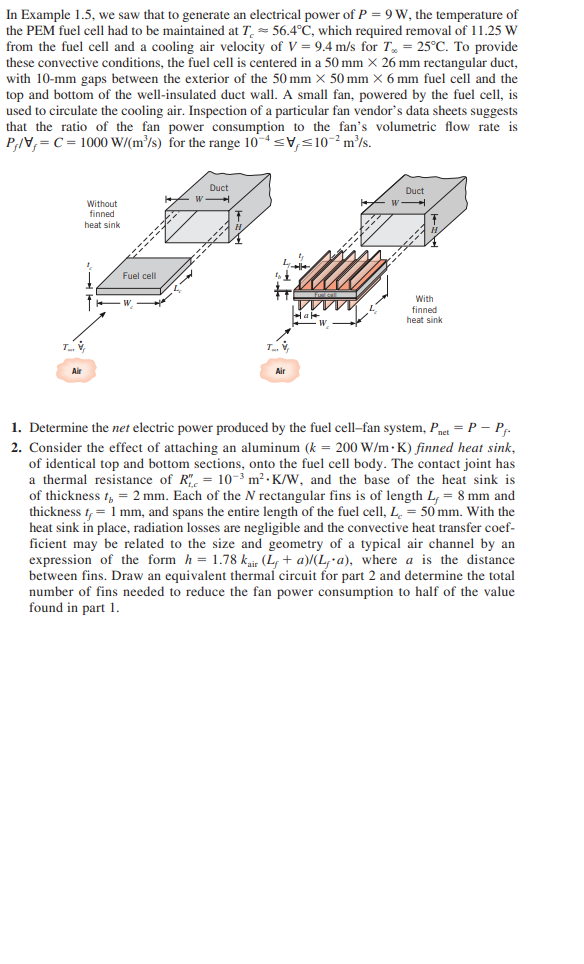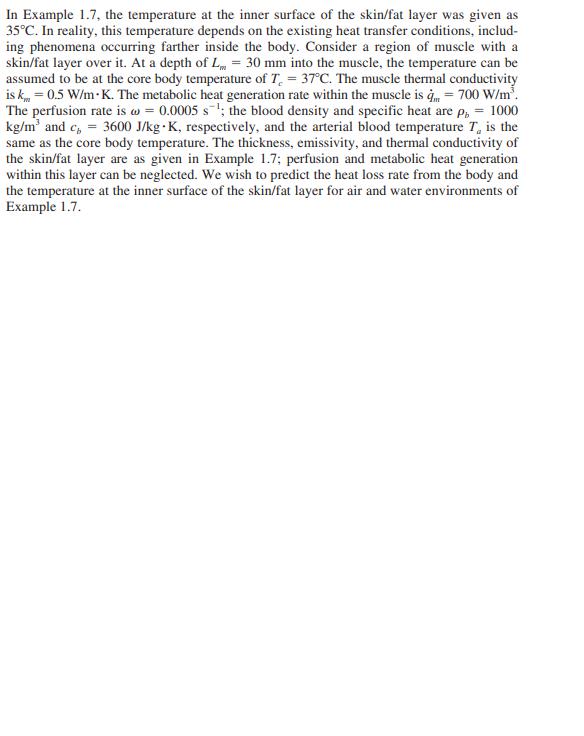solve the question
The possible existence of an optimum insulation thickness for radial systems is suggested by the presence of competing effects associated with an increase in this thickness. In partic- ular, although the conduction resistance increases with the addition of insulation, the con- vection resistance decreases due to increasing outer surface area. Hence there may exist an insulation thickness that minimizes heat loss by maximizing the total resistance to heat transfer. Resolve this issue by considering the following system. 1. A thin-walled copper tube of radius r; is used to transport a low-temperature refrigerant and is at a temperature 7; that is less than that of the ambient air at 7% around the tube. Is there an optimum thickness associated with application of insulation to the tube? 2. Confirm the above result by computing the total thermal resistance per unit length of tube for a 10-mm-diameter tube having the following insulation thicknesses: 0, 2, 5, 10, 20, and 40 mm. The insulation is composed of cellular glass, and the outer surface convection coefficient is 5 W/m. K.The performance of gas turbine engines may be improved by increasing the tolerance of the turbine blades to hot gases emerging from the combustor. One approach to achieving high operating temperatures involves application of a thermal barrier coating (TBC) to the exterior surface of a blade, while passing cooling air through the blade. Typically, the blade is made from a high-temperature superalloy, such as Inconel (k = 25 W/m . K), while a ceramic, such as zirconia (k = 1.3 W/m . K), is used as a TBC. Superalloy Cooling air Hot gases Teams ha Bonding agent TBC Consider conditions for which hot gases at To = 1700 K and cooling air at 7% = 400 K provide outer and inner surface convection coefficients of h. = 1000 W/m' . K and h; = 500 W/m . K, respectively. If a 0.5-mm-thick zirconia TBC is attached to a 5-mm- thick Inconel blade wall by means of a metallic bond- ing agent, which provides an interfacial thermal resis- tance of R" = 10 m . K/W, can the Inconel be main- tained at a temperature that is below its maximum allowable value of 1250 K? Radiation effects may be neglected, and the turbine blade may be approximated as a plane wall. Plot the temperature distribution with and without the TBC. Are there any limits to the thick- ness of the TBC?6.13 Polypropylene wall caps, used for covering exte- nor vents for kitchen cooktops, bathroom fans, dryers, and other building air exhausts, can be made by two different methods. Method X will have a first cost of $75,000, an operating cost of $32,000 per year, and a $9000 salvage value after 4 years. Method Y will have a first cost of $140,000, an operating cost of $24,000 per year, and a $19,000 salvage value after its 4-year life. At an interest rate of 10% per year, which method should be used on the basis of an annual worth analysis? 6.14 Nissan's all-electric car, the Leaf, has a base price of $32,780 in the United States, but it is eligible for a $7500 federal tax credit. A consulting engi- neering company wants to evaluate the purchase or lease of one of the vehicles for use by its em- ployees traveling to job sites in the local area. The cost for leasing the vehicle will be $4200 per year (payable at the end of each year) after an initializa- tion charge of $2500 paid now. If the company purchases the vehicle, it will also purchase a home charging station for $2200 that will be partially offset by a 50% tax credit. If the company expects to be able to sell the car and charging station for 40% of the base price of the car alone at the end of 3 years, should the company purchase or lease the car? Use an interest rate of 10% per year and an- nual worth analysis.6.26 Compare two alternatives for a security system surrounding a power distribution substation using annual worth analysis and an interest rate of 10% per year. Condi Torro First cost, $ -25,000 -130,000 Annual cost, $ per year -9,000 -2,500 Salvage value, $ 3,000 150,000 Life, years 3 DO 6.27 A new bridge across the Allegheny River in Pittsburgh is expected to be permanent and will have an initial cost of $30 million. This bridge must be resurfaced every 5 years at a cost of $1 million. The annual inspection and operating costs are esti- mated to be $50,000. Determine its equivalent an- nual worth at an interest rate of 10% per year. 6.28 For the cash flows shown, use an annual worth comparison and an interest rate of 10% per year. (a) Determine the alternative that is economi- cally best. (b) Determine the first cost required for each of 6. the two alternatives not selected in (a) so that all alternatives are equally acceptable. Use a spreadsheet to answer this question. X Y Z First cost, $ -90,000 -400,000 -650,000 Annual cost, -40.000 -20,000 -13,000 $ per year Overhaul every -80.000 10 years, $ Salvage value, $ 7,000 25,000 200,000 Life, years 3 10 DOIn Example 1.5, we saw that to generate an electrical power of P = 9 W, the temperature of the PEM fuel cell had to be maintained at 7, = 56.4"C, which required removal of 11.25 W from the fuel cell and a cooling air velocity of V = 9.4 m/s for T. = 25"C. To provide these convectionditions, the fuel cell is centered in a 50 mm X 26 mm rectangular duct, with 10-mm gaps between the exterior of the 50 mm X 50 mm X 6 mm fuel cell and the top and bottom of the well-insulated duct wall. A small fan, powered by the fuel cell, is used to circulate the cooling air. Inspection of a particular fan vendor's data sheets suggests that the ratio of the fan power consumption to the fan's volumetric flow rate is "$/W-0IS AS , 01 2BuBI a41 JO1 ($/WI)/M 0OOL =) = A/d Duct Duct W Without finned heat sink Fuel cell With VIT finned Hak heat sink T. Y. Air Air 1. Determine the net electric power produced by the fuel cell-fan system, Pet = P - PA. 2. Consider the effect of attaching an aluminum (k = 200 W/m . K) finned heat sink, of identical top and bottom sections, onto the fuel cell body. The contact joint has a thermal resistance of R,, = 10 m. K/W, and the base of the heat sink is of thickness , = 2 mm. Each of the / rectangular fins is of length L = 8 mm and thickness f = 1 mm, and spans the entire length of the fuel cell, L. = 50 mm. With the heat sink in place, radiation losses are negligible and the convectioneat transfer coef- ficient may be related to the size and geometry of a typical air channel by an expression of the form h = 1.78 kai (L, + a)/(La), where a is the distance between fins. Draw an equivalent thermal circuit for part 2 and determine the total number of fins needed to reduce the fan power consumption to half of the value found in part 1.In Example 1.7, the temperature at the inner surface of the skin/fat layer was given as 35"C. In reality, this temperature depends on the existing heat transfer conditions, include ing phenomena occurring farther inside the body. Consider a region of muscle with a skin/fat layer over it. At a depth of L. = 30 mm into the muscle, the temperature can be assumed to be at the core body temperature of 7, = 37"C. The muscle thermal conductivity is k, = 0.5 W/m . K. The metabolic heat generation rate within the muscle is 4,, = 700 W/m'. The perfusion rate is w = 0.0005 s"; the blood density and specific heat are p, = 1000 kg/m' and c, = 3600 J/kg . K, respectively, and the arterial blood temperature 7, is the same as the core body temperature. The thickness, emissivity, and thermal conductivity of the skin/fat layer are as given in Example 1.7; perfusion and metabolic heat generation within this layer can be neglected. We wish to predict the heat loss rate from the body and the temperature at the inner surface of the skin/fat layer for air and water environments of Example 1.7.\f
